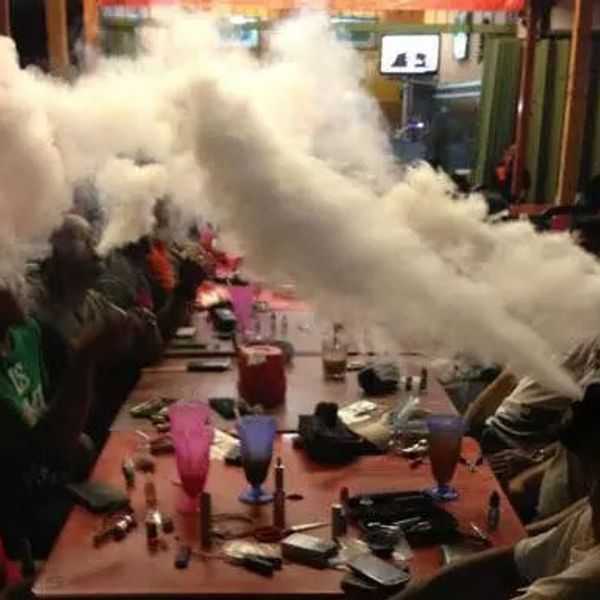Vape in Bars: A Cultural Shift, Controversies, and What You Need to Know
Walk into a bar in major cities like London, New York, or Tokyo, and you might notice a familiar sight: alongside clinking glasses and laughter, a few patrons are subtly puffing on sleek devices, exhaling plumes of scented vapor. vape in bars has become a divisive yet undeniable trend, blending social ritual with evolving regulations and shifting public opinions. Whether you’re a vaper, a bar owner, or simply curious, understanding the dynamics of “vape in bars” reveals much about modern nightlife and the ongoing debate around electronic vape.
The Rise of Vaping in Bars: Why It’s Gaining Traction
Bars have long been spaces for socializing, relaxation, and indulgence—and vaping has carved out a niche within that culture. Several factors explain its growing presence:
1.A Smoker’s Alternative: For ex-smokers or those trying to quit traditional cigarettes, bars (once synonymous with smoking sections) can trigger cravings. Vaping offers a way to satisfy the hand-to-mouth habit and nicotine urges without the tar or smoke of combustible tobacco, making it a popular compromise.
2.Flavor and Atmosphere: Unlike the harsh, lingering smell of cigarette smoke, vape vapor often carries notes of fruit, mint, or dessert. Many vapers argue this enhances the bar experience, adding a pleasant aroma without overwhelming non-vapers or clinging to clothes and furniture.
3.Social Bonding: Vaping, like smoking, can be a social activity. Groups of friends might step outside for a “vape break,” sharing flavors or discussing their devices, mirroring the camaraderie of traditional smoking circles—minus the smoke.
4.Perceived Legality: In regions where indoor smoking bans are strict, some vapers assume vaping falls into a gray area. While laws vary, this perception has led to more open vaping in bars, especially in places with lenient regulations.

The Regulatory Patchwork: Where Is Vaping in Bars Allowed?
One of the biggest challenges with “vape in bars” is the lack of global consistency in rules. What’s permitted in one country (or even one city) might be strictly forbidden in another. Here’s a snapshot of the landscape:
- United States: Laws vary by state and municipality. Some states, like California, ban vaping in enclosed public spaces, including bars, treating it like traditional smoking. Others, such as Texas, leave regulations to local governments, resulting in a mix of policies—some bars allow vaping, others prohibit it entirely.
- United Kingdom: The UK’s Health Act 2006 bans smoking in enclosed public spaces, but vaping is not included in this ban. However, individual bars and pubs can set their own rules; many choose to restrict vaping indoors to avoid alienating non-vaping customers.
- Japan: Japan has strict anti-smoking laws, and while vaping with nicotine is technically illegal, non-nicotine vapes exist in a legal gray area. Most bars prohibit vaping outright to avoid legal risks, though enforcement can be lax in smaller establishments.
- Australia: Vaping laws are among the strictest globally. Nicotine vapes require a prescription, and using them in bars (even nicotine-free ones) is often banned under public health regulations, with fines for both patrons and venue owners.
- European Union: The EU’s Tobacco Products Directive (TPD) doesn’t explicitly ban vape in bars , but member states set their own rules. Countries like France and Germany restrict indoor vaping in public places, including bars, while others (e.g., Spain) are more permissive, leaving decisions to venue operators.
This patchwork creates confusion for travelers and vapers alike. A quick check of local laws or a bar’s signage is essential to avoid fines or awkward confrontations.

Bar Owners’ Dilemma: To Allow or Ban Vaping?
For bar owners, deciding whether to permit vaping is a balancing act between customer satisfaction, legal compliance, and maintaining a welcoming environment.
- Pro-Vape Arguments: Allowing vape in bars can attract a loyal customer base, particularly among ex-smokers who might avoid smoke-free bars. It can also reduce the need for patrons to cluster outside (blocking entrances or disrupting foot traffic) and keep the indoor atmosphere free of cigarette smoke.
- Anti-Vape Concerns: Many non-vapers find vapor irritating, even if it’s less noxious than smoke. Bar owners worry about alienating this demographic, especially as public awareness of potential vape risks grows. There’s also the fear of legal repercussions if local laws are vague or strictly enforced.
As a result, many bars adopt middle-ground policies: designating outdoor “vape zones,” restricting vaping to certain areas (like patios), or banning it entirely during peak hours. Clear signage—whether “Vaping Welcome” or “No Vaping Indoors”—helps manage expectations and avoid conflicts.
Vaper Etiquette in Bars: Navigating Social Norms
Even in bars where vape in bars is allowed, etiquette matters. Being mindful of others ensures the experience remains positive for everyone:
- Ask First: If you’re unsure about a bar’s policy, check with staff or nearby patrons before vaping. A simple, “Is vaping okay here?” shows respect for others’ comfort.
- Avoid Crowded Areas: Even if permitted, vaping in tight spaces (like packed dance floors or near non-vaping tables) can annoy others. Step to a less busy corner or outdoor area when possible.
- Mind the Flavor: Strong, pungent flavors (like heavy menthol or spicy blends) can be overwhelming in enclosed spaces. Opt for milder flavors when vaping around others.
- Dispose of Waste Properly: Empty pods, used coils, or e-liquid bottles should never be left on tables or floors. Carry a small bag to store waste until you find a trash bin.

The Future of Vaping in Bars: What to Expect
As vaping technology evolves and regulations tighten, the role of vaping in bars is likely to shift. Here are a few trends to watch:
- Stricter Regulations: As more research emerges about long-term vape effects, expect more countries to clarify laws, possibly restricting indoor vaping in bars to align with anti-smoking policies.
- Vape-Friendly Venues: Specialized “vape bars” (already popular in some cities) may grow, offering curated e-liquid menus, device demonstrations, and a space where vaping is the main attraction—much like cigar bars for tobacco enthusiasts.
- Technology Advances: New vape devices with reduced vapor output or faster-dispersing aerosols could make indoor vaping less intrusive, potentially easing tensions between vapers and non-vapers.
- Public Opinion Shifts: As vape in bars becomes more mainstream, social norms may adapt. What’s considered “rude” today might become accepted in some circles, while others may harden against it as health concerns persist.
Final Thoughts
Vape in bars is more than a trend—it’s a reflection of our evolving relationship with nicotine, social spaces, and public health. It highlights the tension between personal choice and collective well-being, between tradition and innovation.
For vapers, staying informed about local laws and practicing good etiquette ensures they can enjoy their devices without disrupting others. For bar owners, clear policies and communication foster a space where everyone feels welcome. And for society at large, the debate underscores the need for balanced, evidence-based regulations that protect public health while respecting individual freedoms.
Whether you love it, hate it, or remain neutral, vape in bars is here to stay—at least for now. Navigating it with awareness and respect is key to keeping nightlife vibrant and inclusive for all.
